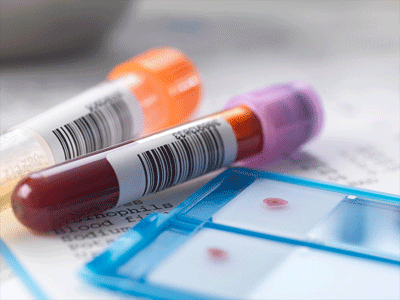
Summary:Using a new profiling procedure invented by investigators permitted them to elucidate the role of immunoresolvents — molecules that help resolve inflammation and infections – in blood coagulation, identifying a new cluster of these molecules that are produced when blood coagulates.
Stopping a wound from bleeding is essential for human health. Blood coagulation — in which blood goes from liquid to gel and forms a clot — can prevent excessive bleeding and infection. But exactly what molecular events transpire when blood coagulates has remained somewhat mysterious. Using a new profiling procedure invented by investigators from Brigham and Women’s Hospital permitted them to elucidate the role of immunoresolvents — molecules that help resolve inflammation and infections -in blood coagulation, identifying a new cluster of these molecules that are produced when blood coagulates. The team’s findings are published online in Science Signaling.
“We’ve identified factors biosynthesized by human blood coagulation that elicit immune responses that protect the host,” said corresponding author Charles N. Serhan, PhD, DSc. director and principal investigator at the Center for Experimental Therapeutics and Reperfusion Injury at BWH. “Our results uncover a previously uncharacterized connection between the coagulation of blood and innate host defense mechanisms. We’ve demonstrated for the first time how the innate immune response is connected to coagulation via novel pro-resolving mediators.”
The new profiling procedure allowed the team to identify a cluster of immunoresolvents, namely resolvin D1, resolvin D5, resolvin E1, lipoxin B4 and maresin 1. These molecules activate immune cells called phagocytes, which can engulf and kill bacteria in the blood. Treating human blood with the components of this cluster of molecules discovered at BWH enhanced the abilities of phagocytes and helped the immune system attack E. coli, a common source of bacterial infection.
Interestingly, the newly developed profiling technique holds potential for profiling immunoresolvants in many contexts. The current study offers a glimpse of immunoresolvents found in the blood of healthy individuals, but the researchers are also interested in studying blood samples from patients with sepsis to pinpoint differences in immunoresolvents. Beyond blood, the research team also found a distinct profile of immunoresolvents in samples of healthy versus cancerous tissue from the testes — they note that this new profiling technique could potentially be used in the future to help distinguish between cancerous and healthy tissue from the testes or elsewhere in the body.
More: Science







Leave a Reply
You must be logged in to post a comment.